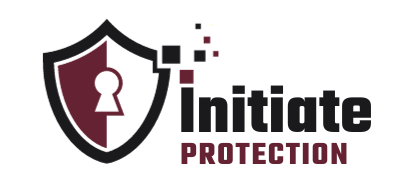Are you concerned about the security of your connected devices? With the increasing popularity of smart homes, protecting your devices has become more important than ever. In this article, we will discuss the potential risks of using connected devices and how you can safeguard your home and personal information. Stay informed and secure with our smart home security tips.
What Is Smart Home Security?
Smart home security is the practice of safeguarding your connected devices and systems in your home from unauthorized access and potential security threats. It utilizes various technologies, including smart locks, cameras, and alarm systems, to remotely monitor and control access to your home.
Through smart home security, you can receive instant notifications about any suspicious activity and promptly take action to protect your home and family. A helpful tip: Be sure to regularly update the firmware and passwords of your smart devices to strengthen their security and prevent potential hacking attempts.
Why Is Smart Home Security Important?
In the modern interconnected world, the significance of smart home security cannot be overstated. It serves as a crucial means of safeguarding your connected devices against cyber threats and unauthorized access. As the number of devices in our homes, such as smart speakers, cameras, and thermostats, continues to increase, the risk of cyberattacks also rises.
Smart home security provides a layer of protection for your personal information, sensitive data, and privacy. It offers peace of mind by preventing hackers from gaining control over your devices and potentially using them for malicious purposes. By investing in smart home security measures, you can fully enjoy the convenience and benefits of connected devices without compromising your safety.
This is exemplified by a true story of a family who fell victim to a security breach when their unsecured smart camera was hacked, allowing the intruder to spy on their activities. This incident serves as a reminder of the importance of smart home security, prompting the family to install robust security measures to protect their privacy and ensure the safety of their connected devices.
What Are the Risks of Not Having Smart Home Security?
Not having smart home security puts you at risk for several potential dangers, such as unauthorized access to your connected devices and personal information, potential hacking of your home network, and compromised privacy. Without proper security measures in place, your smart devices can become vulnerable to cyberattacks, leaving you susceptible to financial loss, identity theft, and even physical harm. It is crucial to protect your connected devices with smart home security systems and practices in order to safeguard your home and personal data from these risks.
According to a study conducted by Statista, the global smart home security market is expected to reach a value of $6.7 billion by 2025.
How Can Smart Home Security Protect Your Connected Devices?
As more and more devices become connected in our homes, it is important to consider the security of these devices. In this section, we will discuss how smart home security measures can protect your connected devices from cyber threats. We will cover five key strategies: securing your network, using strong passwords, keeping software and firmware updated, utilizing two-factor authentication, and monitoring your devices. By implementing these measures, you can ensure the safety and privacy of your smart home devices.
1. Secure Your Network
Securing your network is crucial for maintaining smart home security and protecting your connected devices.
- Change your default router login credentials to a strong, unique password.
- Enable network encryption, such as WPA2, to prevent unauthorized access.
- Disable remote management features to reduce the risk of remote attacks.
- Regularly update your router’s firmware to patch any security vulnerabilities.
- Segment your network by creating separate Wi-Fi networks for different devices, like smart home devices and personal devices, to minimize potential risks.
2. Use Strong Passwords
Using strong passwords is crucial for ensuring the security of your smart home devices. Here are some steps to follow when creating strong passwords:
- Use a combination of uppercase and lowercase letters, numbers, and special characters.
- Avoid using easily guessable information such as your name, birthdate, or common words.
- Make sure your password is at least 8 characters long.
- Use a unique password for each of your smart home devices.
- Consider utilizing a password manager to securely store and generate strong passwords.
Remember, using strong passwords adds an extra layer of protection to your smart home security and helps prevent unauthorized access to your connected devices. Stay safe and secure!
3. Keep Software and Firmware Updated
Keeping your smart home devices secure is crucial, and one way to do so is by regularly updating the software and firmware. This ensures that any vulnerabilities are patched and your devices have the latest security features. Here are the steps to follow in order to keep your software and firmware updated:
- Enable automatic updates: Make sure your devices are set to automatically update software and firmware when new versions are available.
- Check for updates regularly: It’s important to manually check for updates on a regular basis to ensure you have the latest security patches.
- Follow manufacturer guidelines: Always follow the instructions provided by the manufacturer for updating software and firmware.
- Download from trusted sources: Only download updates from official manufacturer websites or trusted app stores.
- Keep track of updates: Keep a record of which devices have been updated and when, to ensure you stay on top of the update process.
4. Use Two-Factor Authentication
Using two-factor authentication is a crucial step in enhancing smart home security. Follow these steps to implement it:
- Enable two-factor authentication in your smart home security system settings.
- Choose a second factor, such as a text message code, fingerprint scan, or facial recognition.
- Enter the second factor when prompted, along with your username and password.
- Ensure that the second factor is something only you have access to, like your mobile device.
- Regularly review and update your two-factor authentication settings as needed.
Fact: Two-factor authentication adds an extra layer of security by requiring a second form of verification, making it harder for unauthorized individuals to access your smart home devices.
5. Monitor Your Devices
Monitoring your devices is a crucial aspect of maintaining the security of your smart home. To effectively monitor your devices, follow these steps:
- Regularly check for any suspicious activity or unauthorized access.
- Keep an eye on your device logs and security alerts for any potential threats.
- Monitor the performance of your devices to ensure they are functioning properly.
- Stay updated with the latest security patches and firmware updates for your devices.
- Utilize security software or apps that offer real-time monitoring and alerts for your connected devices.
In 2016, a family’s smart home security system alerted them to an attempted break-in while they were away. Thanks to the system’s monitoring feature, they were able to contact the authorities who apprehended the intruders and prevented any damage or theft. This incident serves as a reminder of the importance of actively monitoring your devices to protect your home and loved ones.
What Are the Different Types of Smart Home Security?
As the popularity of smart home technology continues to grow, so does the need for effective security measures. In this section, we will discuss the various types of smart home security, each designed to protect your connected devices and keep your home safe. From security cameras that provide real-time monitoring to smart locks that offer keyless entry, we will explore the different options available. Additionally, we will cover the benefits and features of motion sensors, door and window sensors, and smart home hubs in securing your smart home.
1. Security Cameras
Security cameras are an essential component of a smart home security system. They serve as a visual deterrent to potential intruders and allow homeowners to monitor their property remotely. When selecting security cameras for your home, keep the following factors in mind:
- Resolution: Opt for cameras with high-resolution capabilities to capture clear and detailed footage.
- Field of view: Determine the desired coverage area and choose cameras with appropriate viewing angles.
- Connectivity: Select cameras that can connect to your home’s Wi-Fi network for easy accessibility.
- Storage: Decide whether you prefer cameras with local storage or cloud storage options for recorded footage.
- Integration: Consider cameras that can be integrated with other smart home devices, such as smart locks or motion sensors.
2. Smart Locks
Smart locks are an essential component of a smart home security system, providing convenience and enhanced protection. When choosing a smart lock, consider the following steps:
- Assess Your Needs: Determine the features and functionality you require, such as keyless entry, remote access, or integration with other smart devices.
- Research Different Systems: Explore various smart lock brands and models to find one that aligns with your preferences and requirements, including the featured Smart Locks.
- Consider Your Budget: Set a budget for your smart lock purchase and narrow down options that fit within your price range.
- Read Reviews and Get Recommendations: Look for customer reviews and seek recommendations from trusted sources to understand the performance and reliability of different smart lock options.
Remember to consider factors like compatibility with your existing door and security standards. By following these steps, you can choose the right smart lock for your smart home security system.
3. Motion Sensors
Motion sensors are an essential component of a smart home security system, providing an extra layer of protection against intruders. Here are some steps to consider when using motion sensors:
- Strategic Placement: Place motion sensors in key areas of your home, such as entryways and hallways, to maximize coverage.
- Adjustment Settings: Adjust the sensitivity and range of the motion sensors to ensure they are not triggered by pets or other non-threatening movements.
- Integration with Alarm System: Connect the motion sensors to your home alarm system to activate an alert or trigger a response when motion is detected.
- Remote Monitoring: Use a smart home security app to monitor the status of the motion sensors and receive notifications when motion is detected.
- Regular Maintenance: Test and calibrate the motion sensors regularly to ensure they are functioning properly.
Fact: Motion sensors can detect movement within a specified range and send alerts to your smartphone, providing real-time updates on any suspicious activity in your home.
4. Door and Window Sensors
Door and window sensors are crucial components of a smart home security system, providing an additional layer of protection against potential intruders. To ensure their effectiveness, follow these steps:
- Install sensors on all accessible doors and windows.
- Ensure proper placement for optimal detection.
- Connect sensors to your smart home hub or security system.
- Configure settings to receive real-time alerts whenever doors or windows are opened.
- Integrate sensors with other security devices, such as cameras or alarms.
Pro-tip: It is essential to regularly test your door and window sensors to guarantee they are functioning correctly and replace batteries as needed.
5. Smart Home Hubs
Smart home hubs are central devices that connect and control various smart devices in your home. When choosing a smart home hub, there are several factors to consider:
- Compatibility: Make sure the hub is compatible with the smart devices you currently own or plan to purchase.
- Connectivity: Look for a hub that supports multiple communication protocols such as Wi-Fi, Bluetooth, and Zigbee.
- Scalability: Consider future expansion by selecting a hub that can support additional devices.
- Automation: Choose a hub that offers automation features to create custom schedules and routines.
- User-friendly interface: Opt for a hub with an intuitive mobile app or voice control compatibility for easy operation.
How Can You Choose the Right Smart Home Security System?
With the increasing popularity of smart home devices, it has become crucial to ensure the security and protection of your connected devices. But with so many options available in the market, how can you choose the right smart home security system for your specific needs? In this section, we’ll discuss the key factors to consider when selecting a system, including assessing your needs, researching different options, setting a budget, and reading reviews and seeking recommendations. By following these guidelines, you can make an informed decision and find the perfect smart home security system for your home.
1. Assess Your Needs
Assessing your needs is a crucial step in selecting the perfect smart home security system. To help you in this process, here are some steps to follow:
- Evaluate your home’s vulnerabilities, such as entry points and areas of concern.
- Determine your security priorities, whether it’s monitoring, access control, or automation.
- Consider your budget and the level of investment you are willing to make.
- Research different systems and their features to find the ones that align with your needs.
- Read reviews and seek recommendations from trusted sources to gather insights.
In 2017, a family sought professional assistance in assessing their smart home security needs. After a thorough evaluation, they opted for a comprehensive system that included security cameras, smart locks, motion sensors, and door/window sensors. This system provided them with the peace of mind they desired, allowing them to monitor their home remotely and enhance their overall security.
2. Research Different Systems
To research different smart home security systems, follow these steps:
- Identify your specific security needs and priorities.
- Conduct thorough online research on various systems available in the market.
- Read customer reviews and ratings to understand the performance and reliability of each system.
- Consider the features and capabilities of each system, such as camera resolution, motion detection, and integration with other smart devices.
- Compare prices and determine if the system fits within your budget.
- Seek recommendations from friends, family, or trusted sources who have experience with smart home security systems.
3. Consider Your Budget
When determining your budget for a smart home security system, follow these steps:
- Assess your needs: Determine the level of security you require and prioritize accordingly.
- Research different systems: Compare prices, features, and customer reviews to find the best option for your budget.
- Consider your budget: Set a budget range and find a system that meets your needs within that range, taking into account any additional costs such as installation fees.
- Read reviews and get recommendations: Look for feedback from other users to ensure the system is reliable and worth the investment.
In the past, budget considerations have played a significant role in the adoption of smart home security systems. However, with advancements in technology and affordability, more homeowners can now enjoy the benefits of a secure smart home within their budget.
4. Read Reviews and Get Recommendations
Reading reviews and getting recommendations is a crucial step in selecting the appropriate smart home security system. Follow these steps:
- Research reputable websites and forums that offer unbiased reviews and user experiences.
- Read both positive and negative reviews to gain a comprehensive understanding of the system’s strengths and weaknesses.
- Consider recommendations from friends, family, or colleagues who have already installed smart home security systems.
- Take into account the specific needs and requirements mentioned in the reviews and recommendations.
- Compare multiple systems and their reviews to make an informed decision.
History has shown that following reviews and recommendations can help avoid potential issues and ensure a reliable smart home security system.
What Are Some Tips for Maintaining Smart Home Security?
As technology advances, so does the risk of cyber attacks on our smart home devices. It is important to take proactive measures in maintaining smart home security to protect ourselves and our families. In this section, we will discuss five essential tips for keeping your connected devices safe. These include regularly updating software and firmware, changing passwords regularly, being aware of potential vulnerabilities, monitoring network activity, and educating yourself and your family on smart home security. By implementing these tips, you can ensure the safety and privacy of your smart home.
1. Regularly Update Software and Firmware
To ensure the security of your smart home devices, it is crucial to regularly update the software and firmware. This helps to protect against vulnerabilities and keep your devices running smoothly. Here are some steps to follow:
- Enable automatic updates for your devices, if available.
- Regularly check for updates manually and install them promptly.
- Ensure that you are using the latest version of the software or app associated with your devices.
- For devices that connect to your home network, update the firmware of your router or gateway as well.
- Consider setting up notifications or alerts to be informed about new updates or security patches.
Fact: Research shows that regularly updating software and firmware is crucial for the security of smart home devices. Outdated versions are common entry points for cyberattacks, so keeping your devices up-to-date significantly reduces the risk of unauthorized access and enhances overall security.
2. Change Passwords Regularly
Changing passwords regularly is an essential step in maintaining smart home security. Here are some steps to follow:
- Create strong, unique passwords for each device or account.
- Set a reminder to change passwords every 3-6 months.
- Avoid using easily guessable information, like birthdays or names.
- Use a combination of uppercase and lowercase letters, numbers, and special characters.
- Consider using a password manager to securely store and generate passwords.
By regularly changing passwords, you can minimize the risk of unauthorized access to your smart home devices and protect your connected devices from potential threats.
3. Be Aware of Potential Vulnerabilities
Being aware of potential vulnerabilities is crucial when it comes to smart home security. Here are some steps to take:
- Regularly update your smart devices’ software and firmware to ensure they have the latest security patches.
- Change your passwords regularly and avoid using default or easily guessable passwords.
- Be Aware of Potential Vulnerabilities: Be cautious of potential vulnerabilities such as outdated or unsupported devices that may no longer receive security updates.
- Monitor your network activity for any suspicious behavior or unauthorized access.
- Educate yourself and your family about common security risks and how to protect your connected devices.
4. Monitor Your Network Activity
Keeping a close eye on your network activity is a vital step in maintaining the security of your smart home. Here are some steps to effectively monitor your network:
- Regularly check your router’s activity logs to identify any suspicious or unauthorized connections.
- Utilize a network monitoring tool or software to keep track of the traffic on your network and detect any unusual or malicious activities.
- Monitor your internet bandwidth usage to identify any sudden spikes that could indicate unauthorized access.
- Activate network security features, such as firewalls and intrusion detection systems, to help detect and block any unauthorized access attempts.
- Frequently update your router’s firmware to ensure that you have the latest security patches and fixes.
True story: A homeowner noticed that their internet connection was unusually slow. After monitoring their network activity, they discovered that a neighbor was leeching off their Wi-Fi network without permission. By addressing this issue and improving their network security, the homeowner was able to prevent unauthorized access and maintain a secure smart home environment.
5. Educate Yourself and Your Family
Educating yourself and your family is crucial for maintaining smart home security. Here are some steps to follow:
- Stay informed: Keep up with the latest security threats and best practices.
- Train family members: Teach them about safe online behavior, such as avoiding suspicious links and downloads.
- Enable parental controls: Set up restrictions for children’s devices to protect them from inappropriate content or online dangers.
- Regularly communicate: Discuss security measures, potential risks, and any concerns with your family.
- Practice good password hygiene: Encourage everyone to use strong, unique passwords and enable two-factor authentication when available.
Frequently Asked Questions
What is smart home security and why is it important?
Smart home security refers to the use of connected devices and technology to protect your home from potential intruders and security threats. It is important because as we become increasingly reliant on smart devices, we also open ourselves up to potential vulnerabilities that can be exploited by hackers.
How does smart home security work?
Smart home security uses a combination of connected devices such as cameras, motion sensors, and door/window sensors, along with a central hub and mobile app, to monitor and protect your home. The devices communicate with the hub, which then sends alerts and notifications to your phone if there is any suspicious activity or breach.
What are some examples of connected devices that can be used for smart home security?
Some examples of connected devices that can be used for smart home security include smart cameras, smart door locks, smart motion sensors, smart door/window sensors, and smart smoke detectors. These devices can be controlled and monitored through a central hub or through a mobile app.
How can I ensure the security of my connected devices?
To ensure the security of your connected devices, it is important to follow some best practices such as regularly updating the firmware of your devices, using strong and unique passwords, and using a secure Wi-Fi network. It is also recommended to use devices from reputable brands and to regularly check for any suspicious activity.
Can smart home security systems be hacked?
While no system is completely immune to hacking, implementing smart home security measures can greatly reduce the risk of your devices being compromised. By following best practices and using reputable devices and networks, you can greatly reduce the chances of your smart home security system being hacked.
Is it worth investing in smart home security?
Yes, investing in smart home security can provide peace of mind and added protection for your home and family. With the increasing popularity of connected devices, it is important to take measures to secure your home and protect your personal information from potential threats. Additionally, some homeowners insurance companies offer discounts for having a smart home security system in place.




